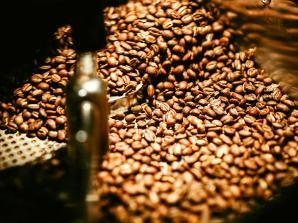The notion that “coffee = bitter” is deeply ingrained in most people’s minds. But coffee does, in fact, have a natural sweetness. “Sweetness” is one of the criteria cuppers use on their test scores, so let’s discuss the natural sweetness of coffee.
Is the “sweetness” of coffee a form of self-deception?
Is the frequent claim of coffee lovers that coffee is sweet a form of self-deception? Actually, no. The secret to coffee’s sweetness lies in its aroma, not its inherent high sugar content.
A study on tomatoes offers a brief illustration: researchers analyzed the chemical composition of two different tomato varieties and found that variety A contained more sucrose than variety B. However, volunteers reported that variety B was sweeter.
The experiment found that while variety B did not contain more sugar than variety A, it did have higher levels of seven aroma volatiles, a difference that made variety B taste sweeter.
Coffee contains several aromatic compounds that contribute to the perception of sweetness. These same compounds are also found in strawberries and pineapples. Therefore, when tasting coffee, comments such as “This coffee tastes like strawberry” or “It tastes like pineapple” are common.
How can you taste sweetness in coffee?
Even after explaining all the scientific research, if you haven’t yet tasted a sweet cup of coffee, here are two suggestions for those who want to experience “sweetness” in coffee: one is to choose coffee that naturally exhibits sweetness. The other is to practice becoming more sensitive to sweetness.
Sweetness is related to ripeness.
In the Cup of Excellence competition, sweetness is considered to be closely linked to picking coffee cherries at the appropriate ripeness.
Usually, picking perfectly ripe coffee cherries results in a sweeter cup of coffee and a cleaner, less irritating aroma. However, when purchasing coffee, even the barista may not know whether the coffee was picked after ripeness, making it difficult to use as a guideline.
Sweetness also depends on the variety.
As many people know, there are two major branches of coffee: Robusta, a cheap, plentiful, and virtually pest-resistant variety; and Arabica, a more expensive, less plentiful, and delicate variety.
Robusta has several times more caffeine than Arabica, but in addition to caffeine, Arabica also has a higher sugar content. So if you want sweet coffee, you might want to start paying attention to whether your coffee is Arabica or Robusta.
Sweetness is Related to Brewing Methods
In addition to these factors affecting coffee’s sweetness on the farm, roasting and brewing are also important factors. When roasting coffee, longer roasting times and higher temperatures evaporate more sugars and sweet aromas, while also producing more bitter compounds. Therefore, consider the “medium-light roast = easier to taste sweet coffee” as an indicator.
Practice a More Sensitive Perception of Sweetness
As mentioned earlier, the brain becomes addicted to sweetness; it requires a higher intake of sugar for the brain to secrete dopamine. Furthermore, the more sugar you consume, the more numb your tongue becomes to natural sweetness.
Did you know that drinking a 350ml bottle of cola is equivalent to consuming 39 grams (about nine teaspoons) of sugar?
Imagine adding nine teaspoons of sugar to your latte. It would be very difficult to recapture the original flavor of the coffee, right? If you want to “become more sensitive to sweetness,” the most direct and effective way is to cut out sugar. If that’s not possible, reducing the frequency of sugary drinks you consume will also have some effect.
Release from Suppression
Finally, I’ll teach you a method to reset your sense of taste called “Release from Suppression.” This method is not difficult at all. It essentially involves using acid to reverse-restore your sweetness perception. Here’s how it works: Juice a few oranges and lemons. Never buy commercial lemon juice just for convenience.
Even if this lemon juice says “lemon juice,” it likely still has some added sugar. So, try using real fruit juice if possible. Dilute both cups of juice with water, ensuring both are diluted in equal proportions.
First, take a sip of the sweet orange juice. It might initially taste sour and lack sweetness. Then, take a sip of the lemon juice. By this point, you’ll probably be wincing at the sourness. Then, return to the orange juice. You’ll notice it’s sweeter than before, indicating your sweetness perception has recovered.
Gradually increase the strength, and your sweetness perception will return to a level close to your original taste. Don’t rush to enjoy the sweetness of coffee right away. Use the suppressed release method to restore your taste buds. Combined with a sugar-free or reduced sugar lifestyle, you’ll eventually discover the true sweetness of coffee.


Leave a Reply